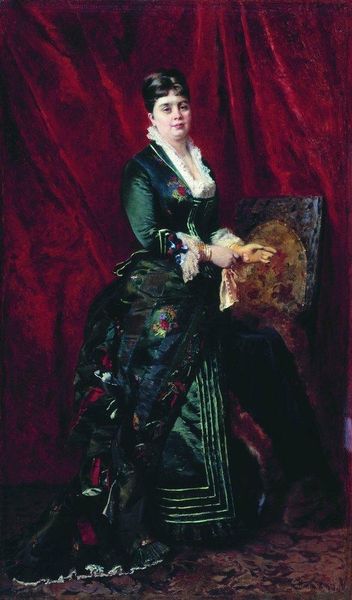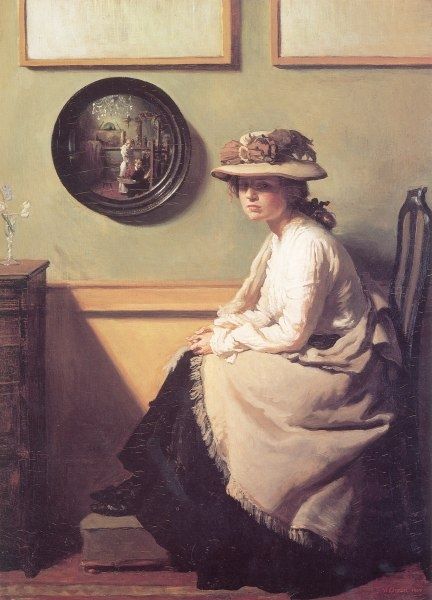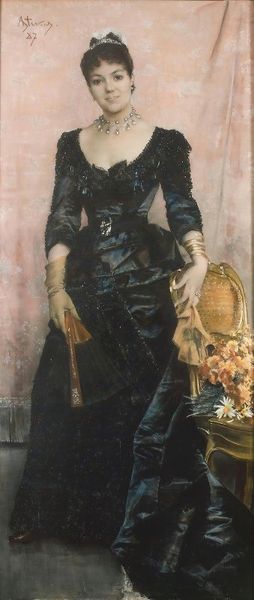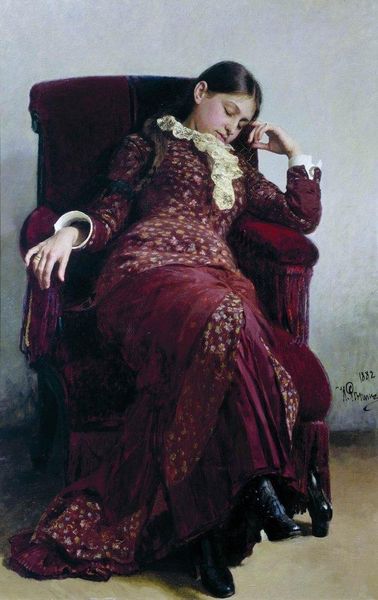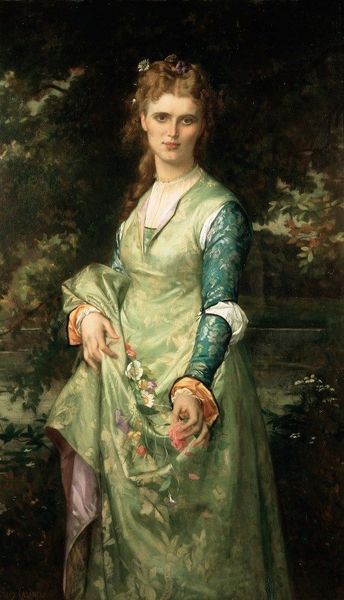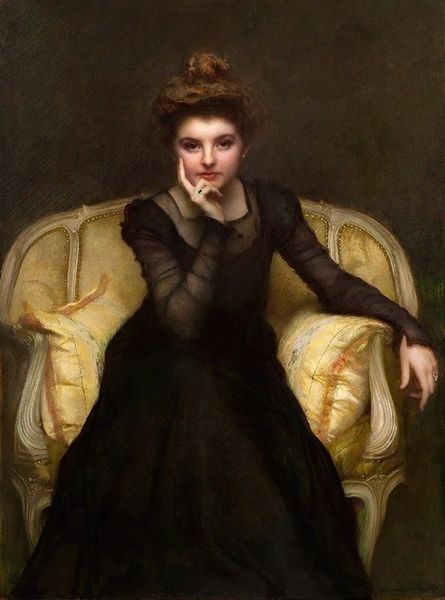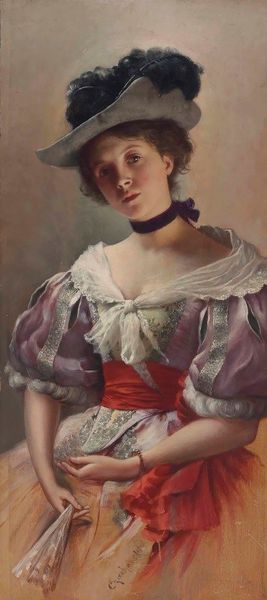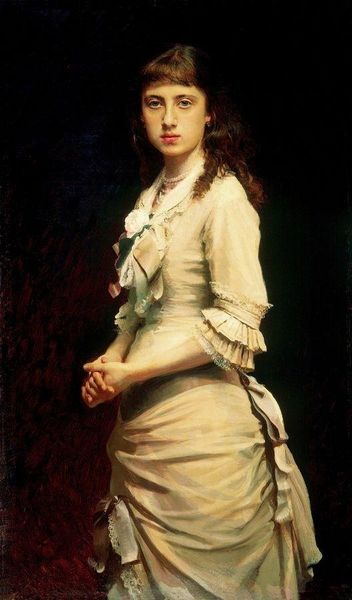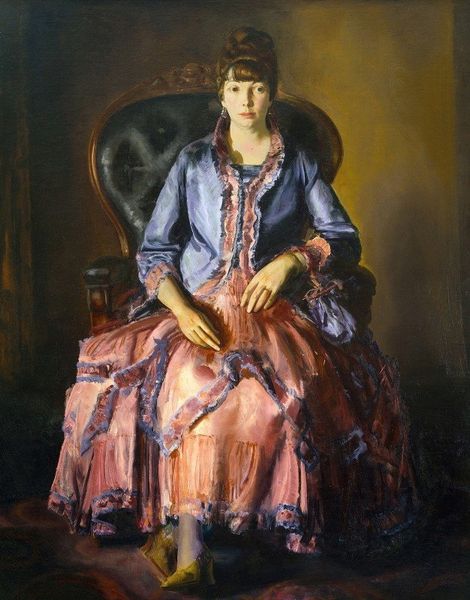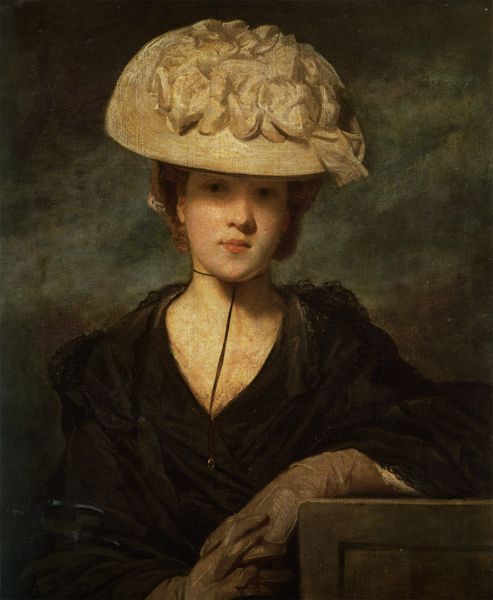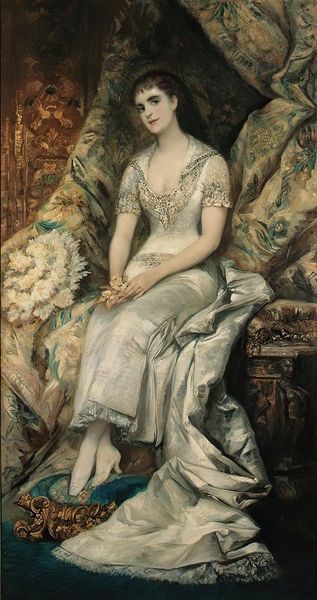
Copyright: Public domain
Editor: Here we have Lilla Cabot Perry's "The Black Hat," painted in 1914 using oil paint. There's something quite serene about her gaze and posture; what aspects of the social and historical context shaped Perry's depiction of women here? Curator: That serenity is carefully constructed. Considering the social limitations placed upon women artists of this era, it's worth noting that portraiture allowed Perry a unique avenue for creative expression, while simultaneously adhering to acceptable artistic conventions. She paints a woman who embodies a certain privileged class, yet her contemplative pose suggests a subtle interiority, a space for thought often denied to women in public life. Do you notice anything about the use of color and shadow? Editor: The dark colors definitely create a sense of introspection, contrasting with the light on her face and hand, almost as if she's caught in a moment of reflection. Curator: Exactly. This contrast can be interpreted as Perry subtly highlighting the tensions between societal expectations and the individual woman's inner life. Moreover, Perry, having spent time in France, was very influenced by Impressionism. How do you see Impressionism being deployed here as a method of resistance to traditional Academic Art? Editor: Well, it’s like the brushstrokes are looser and more visible, so she's kind of staking a claim on her individual artistic voice. And maybe there’s an act of defiance, even, in focusing on such an intimate, seemingly quiet moment instead of, say, some grand historical scene? Curator: Precisely. She’s finding power in the personal. Perry offers us a view of womanhood that pushes back against prevailing social narratives while still navigating them, don't you think? Editor: That’s so interesting; I hadn’t considered the quiet resistance embedded in the painting. It really makes me reconsider how portraiture itself can be a tool for social commentary. Curator: Absolutely. And hopefully, this has inspired you to continue investigating the intricate interplay between art, gender, and power!
Comments
No comments
Be the first to comment and join the conversation on the ultimate creative platform.
